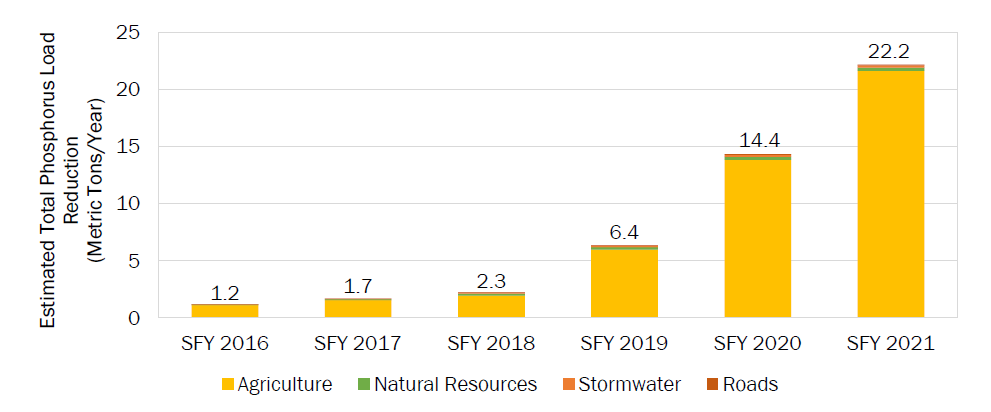2021 in review
By Sonia Howlett, VT Agency of Agriculture, Food & Markets
Every year in January the Vermont Agency of Agriculture, Food & Markets delivers a report to the legislature highlighting the efforts that we have made to deliver agricultural water quality results in the past state fiscal year. Here are some highlights from State Fiscal Year (SFY) 2021, which covers July 1, 2020 to June 31, 2021:
28,700 acres of conservation practices were implemented under the Field Agronomic Practices Program.
Over 2.2 million dollars of Agency funds went out to farmers for engineered projects through the Best Management Practices program. This leveraged close to $3.5 million in federal funds, with a total cost-share contribution from Vermont farms of $690,154.
27 pieces of conservation equipment were purchased through the Capital Equipment Assistance Program (CEAP). Equipment purchased under past CEAP grants have implemented over 57,300 acres of conservation practices since 2018.
40 conservation practices such as fences, watering tubs, stream crossings and walkways were installed through the Pasture and Surface Water Fencing Program.
Vermont’s Conservation Reserve Enhancement Program was able to install 35 acres of riparian buffers and has many more projects lined up for SFY 2022, pending Farm Services Agency approval.
111 educational events were held, reaching 3,097 participants. Over 75% of those events were held virtually, as the Agency and partners adapted their events to COVID.
908 farm visits for technical assistance to farmers were conducted by Agency staff or partners.
Agency staff completed 256 regulatory visits and inspected a total of 2,512 acres of production area.[HS1] [ST2]
According to Department of Environmental Conservation figures, this implementation has resulted in over 95% of all reported phosphorus reductions in Vermont being attributed to efforts in the agricultural sector for the sixth year in a row. We have seen the phosphorus reductions from agriculture grow every year since SFY 2016. 21.6 metric tons of P reductions from agriculture were estimated in SFY 2021 in the Lake Memphremagog and Lake Champlain basins from state-funded efforts alone.
None of this work could be possible without the engagement of you, the farmers. Thank you all for your time, effort, and investment in this water quality work. It is incredible to be able to show the legislature and public how much Vermont farmers are doing to play their part in keeping our waterbodies clean.
For more information on the effects of implementation efforts led by the Agency of Agriculture, visit agriculture.vermont.gov/water-quality/additional-resources-and-reports. In addition to the work funded by the Agency of Agriculture, Food & Markets and other state agencies, our federal and local partners from across the Vermont Agricultural Water Quality Partnership have contributed to outreach, funding, tracking, and reporting on farm water quality reductions across the state. To learn more, visit vtagcleanwater.org

Figure 1: Metric tons of estimated total phosphorus load reduction per fiscal year in the Lake Champlain and Lake Memphremagog basins resulting from state investments in different land use sectors. This figure comes from the 2021 Clean Water Investment Performance Report. To learn more, visit dec.vermont.gov/water-investment/cwi/reports. This figure does not include reductions from Production Area Compliance, which adds an additional 3.3 metric tons from Agriculture in SFY 2021, or from Federally, locally, or farmer-funded projects.

